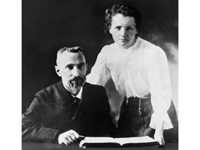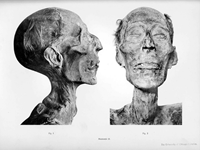On a stormy Monday in March 1827, German composer Ludwig van Beethoven passed away after a long illness. The composer, who had been bedridden since the previous Christmas, was suffering from jaundice, his limbs and abdomen were swollen, and every breath was laboured.
While sorting through his personal belongings, friends uncovered a document Beethoven had written a quarter of a century earlier - a will asking his brothers to make public details of his condition.
Today it is no secret that one of the greatest musicians the world has ever known was functionally deaf in his mid-40s. The tragic irony that Beethoven wanted the world to understand was not only personal, but also medical.
The composer would outlive his doctor by nearly two decades, but nearly two centuries after Beethoven's death, a group of researchers set out to fulfil his will in a way he could never have imagined, by genetically analysing DNA from verified samples of his hair.
"Our primary goal was to shed light on Beethoven's health problems, which included progressive hearing loss that began in his mid-to-late 20s and eventually led to him becoming functionally deaf in 1818," said biochemist Johannes Krause of the Max Planck Institute for Evolutionary Anthropology in Germany.
The primary cause of this hearing loss was never known, even by his personal physician, Dr Johann Adam Schmidt. What began as tinnitus in his twenties gradually led to a decreased tolerance for loud noise and eventually to hearing loss at high pitches, effectively ending his career as a stage performer.
Nothing could be more ironic for a musician. In a letter to his brothers, Beethoven admitted that he was "hopelessly affected" to the point of contemplating suicide.
Hearing loss was not the only thing the composer had to deal with in his adult life. From at least the age of 22 he is said to have suffered from severe abdominal pains and bouts of chronic diarrhoea.
Six years before his death, the first signs of liver disease appeared; this disease is thought to have been responsible, at least in part, for his relatively young death at the age of 56.
In 2007, a forensic study of a lock of hair thought to be Beethoven's hair suggested that lead poisoning may have hastened his death, if not ultimately been responsible for the symptoms that caused it.
Given the culture of drinking from lead pots and the medical treatments of the period that involved the use of lead, this is hardly a surprising conclusion.
But this latest study, published in March this year, disproves the theory and reveals that the hair was never Beethoven's, but instead belonged to an unknown woman.
More importantly, the few strands of hair that are far more likely to have belonged to the composer's head suggest that his death was likely the result of a hepatitis B infection, exacerbated by his drinking and numerous risk factors for liver disease.
What about his other ailments?
"We have found no definitive reason for Beethoven's deafness or gastrointestinal problems," Krause said.
In some ways, we are left with more questions about the life and death of the famous classical composer. Where did he contract hepatitis? How did a lock of women's hair remain Beethoven's hair for centuries? And what was behind his intestinal pains and hearing loss?
An unfortunate conclusion, considering that the team was inspired by Beethoven's desire for the world to understand his hearing loss. Still, there was one more surprise buried in his genes.
Further research comparing the Y chromosomes in hair samples with those of modern relatives of Beethoven's paternal line points to a mismatch. This suggests sexual activity outside marriage in the generations leading up to the composer's birth.
"This finding points to an out-of-wedlock paternity in the paternal line between the conception of Hendrik van Beethoven in Kampenhout, Belgium, in about 1572 and the conception of Ludwig van Beethoven seven generations later in Bonn, Germany, in 1770," said Tristan Begg, now a biological anthropologist at Cambridge University in the UK.
All this may have been a little more than the young Beethoven could have hoped for, given the fateful request he put down on paper. He could never have imagined the secrets his friends and associates were hiding when they cut the hair from his body after that gloomy and stormy Monday night in 1827.
Source: https://www.sciencealert.com/


 Nielawore
Nielawore











Yorum yazmak için lütfen giriş yapınız